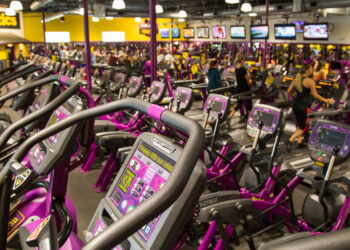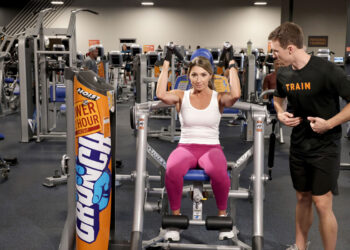Have you ever witnessed a coppercolored discoloration on equipment prior to working out, especially on a piece of aerobic equipment? If so, you have noticed unsightly corrosion and rust on fitness equipment. Intense workout sessions, like Spinning classes, have helped to highlight this issue on a variety of equipment in today’s health clubs. If not addressed, corrosion can result in expensive replacement parts, warranty claims, unscheduled maintenance, and in extreme cases, replacement of entire units!
Rust on equipment surfaces can cause headaches for club owners, equipment manufacturers, and club members. Club owners and staff employees have to take the time to address deterioration due to corrosion by applying for warranty replacement parts or, in extreme cases, by replacing the complete unit. Warranty replacement of parts is very expensive for the equipment manufacturers. Last but not least, the club members are inconvenienced when workout equipment is out-of-commission for warranty repairs. Members can also be critical of and reluctant to use equipment that does not “look clean” or well-maintained because of rust or corrosion.
How should one maintain equipment that is exposed to sweat and salts? The answer is a tricky one and requires knowledge about how corrosion forms. Corrosion results in the destruction of metal by oxidation. In your clubs, corrosion on equipment is exacerbated by perspiration from club members. Water, salts, and acids in our perspiration are very corrosive and can result in the pitting of metal surfaces. Once the sweat has reacted with the metal, corrosion becomes visible in the form of rust. Rust can form on all metal surfaces as well as chains, flywheels, handlebars, pedals, etc. Exercise facilities near the ocean and onboard ships can have intensified rates of corrosion due to the high humidity and salty environments.
It is important to understand that the spread of rust can be inhibited with the use of specialized products before rust starts to form. Once it starts, rust cannot be completely removed from the piece of equipment without aggressive mechanical or chemical treatment. Corrosion- and rust- inhibitor products should initially be applied before the rust forms. Preliminary application should be initiated by the manufacturer, and continued by staff members or authorized contract cleaners.
Preventative maintenance and frequent cleaning are the best defenses when maintaining the variety of exercise equipment found in today’s fitness facilities. A staff member may use a variety of products to clean, deodorize, and disinfect different types of exercise equipment, but usually the same equipment needs specialized cleaning to tackle the corrosion that shortens the equipment’s useful life. Unseen and hard-to-reach areas harbor corrosion, but this problem shows up on exposed surfaces as well.
There are many lubricant-type products on the market, but there are only a few products that provide effective corrosion protection. These products come in different forms and use several different delivery systems. Correct application of the proper corrosion-inhibiting protectant is critical for minimizing the corrosion potential. Presaturated wipes can carry protective formulations and provide the needed mechanical action for removal of corrosion-causing compounds, but may not reach into small gaps between tight moving parts. Sprays are good for applying the corrosion-inhibiting product to parts that are hard to reach, but overspray may result in staining of flooring. Specialty applicators, such as swabs or needlepoint-capped bottles, can help to minimize overspray and ensure that the product is deposited on the desired location. It is likely your club is best served by utilizing more than one type of delivery system.
Maintenance timing for the corrosion inhibiting product application is also very critical. Your members will not be happy if they stain their clothes because the corrosion protection is not completely dry. Unlike most cleaning wipes which use a water-based cleaner, many corrosion protectors are oil-based. Be sure to allow enough time for the products to dry to the touch before allowing your club members to use the equipment. They will thank you in the long run!
Proper maintenance of your equipment does not have to be difficult and expensive. Products that make the maintenance job easier and more effective continue to become available on the market. Considering the cost of regular maintenance versus the cost of shortened equipment life and lost membership due to rusty, “ugly” equipment, it is far easier to keep a customer happy with existing equipment than to find another person to join your club.
Kedar Patel is the Product Manager of Athletix Products, a division of Contec, Inc. He can be contacted at 864.503.8333, or by email at kpatel@contecinc.com.








